Varicose veins can indeed be a source of discomfort, both physically and aesthetically. The sight of those swollen and twisted veins crisscrossing your legs is a common concern for millions of people globally. However, you need not resign yourself to living with them permanently. In this blog, we will delve into the realm of varicose vein self-care and discover ways for you to regain control over your leg health. Whether it’s to alleviate pain, reduce swelling, or simply feel better about your legs, there are various strategies you can incorporate into your daily routine. Let’s embark on this journey to understanding and managing varicose veins, empowering you to take proactive steps towards improved leg health.
Understanding Varicose Veins
Before diving into self-care strategies, it’s essential to understand what varicose veins are and what causes them. Varicose veins occur when the one-way valves in your veins weaken or become damaged, allowing blood to flow backward and pool in the veins. This pooling of blood causes the veins to enlarge, becoming visible beneath the skin’s surface.
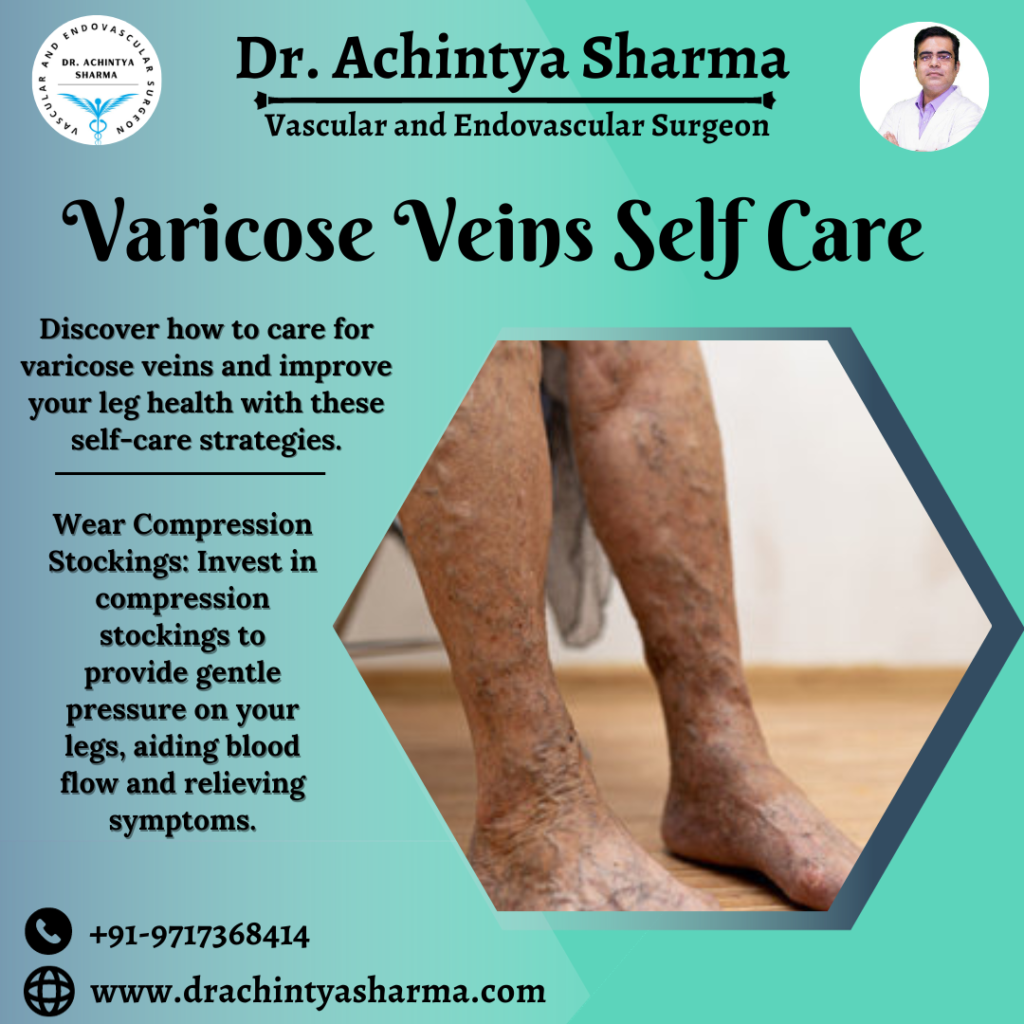
1. Maintain a Healthy Lifestyle:
The first step in managing varicose veins is adopting a healthy lifestyle. To incorporate these practices, follow these steps:
– Exercise regularly: Engaging in activities that promote good blood circulation, such as walking, swimming, and cycling, can help reduce the risk of varicose veins and alleviate their symptoms.
– Maintain a healthy weight: Being overweight can put added pressure on your veins, exacerbating varicose vein self-care issues. Maintain a balanced diet and exercise to achieve and maintain a healthy weight.
2. Elevate Your Legs:
You can reduce varicose vein swelling and discomfort by elevating your legs. Make certain that your legs are elevated above your heart level as much as possible in order to promote blood flow back to the heart. Try propping your legs up with pillows while you’re resting or sleeping.
3. Compression Stockings:
Compression stockings are a valuable tool in varicose vein self-care. These specially designed garments apply gentle pressure to your legs, helping to improve blood flow and reduce swelling. You can find a variety of compression stockings with different levels of compression, so consult with a healthcare professional to determine which type is right for you.
4. Dietary Choices:
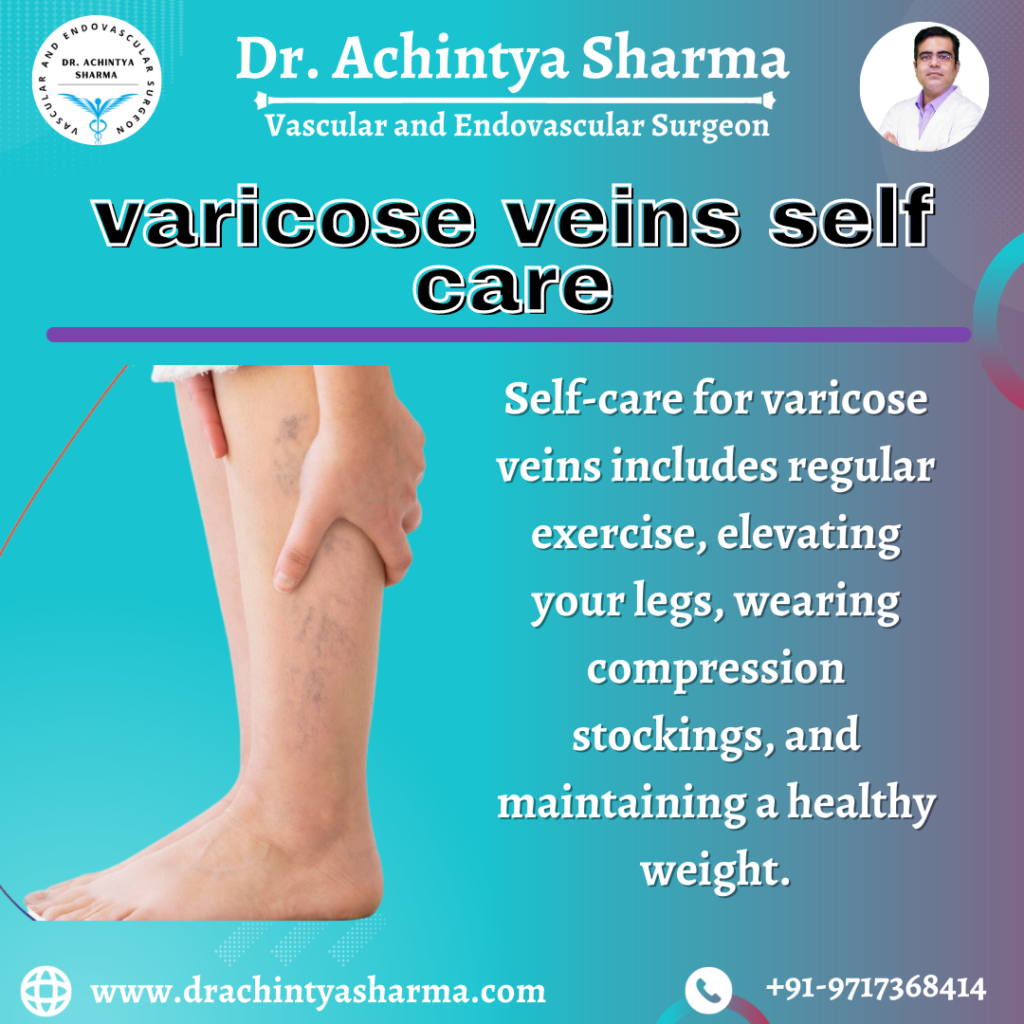
Your diet plays a role in your vascular health. Include foods rich in fiber, antioxidants, and anti-inflammatory properties. These can help reduce inflammation and improve circulation. Some foods to consider are berries, leafy greens, and whole grains.
5. Hydration:
Staying well-hydrated is essential for maintaining good blood circulation. Aim to drink plenty of water throughout the day to prevent dehydration, which can worsen varicose vein symptoms.
6. Avoid Prolonged Sitting or Standing:
Sitting or standing for extended periods can exacerbate varicose vein symptoms. Make sure to take breaks, stretch your legs, and change positions regularly if your job or daily routine requires long periods of sitting or standing.
7. Consult a Healthcare Professional:
If your varicose veins are causing significant pain or discomfort, it’s essential to seek advice from a healthcare professional. They can provide treatment options, including minimally invasive procedures to address varicose veins effectively
Conclusion:
Varicose vein self-care is not just about aesthetics; it’s about improving your overall leg health and well-being. By incorporating these lifestyle changes and strategies into your daily routine, you can take steps towards alleviating the discomfort and preventing further progression of varicose veins. Remember that consulting a healthcare professional for a comprehensive assessment and guidance is crucial to tailor your self-care approach to your specific needs. Take control of your leg health, and start feeling better one step at a time.

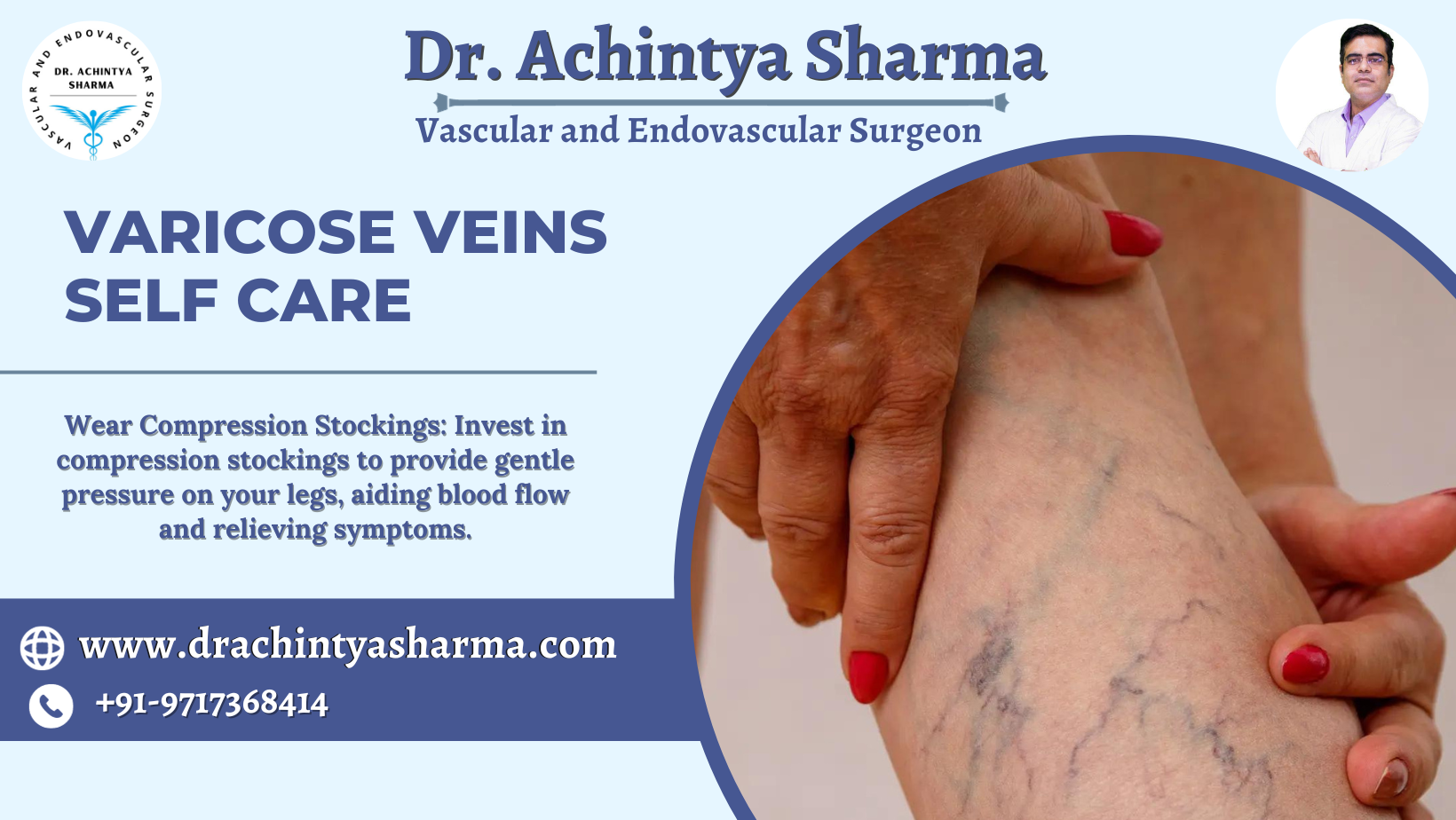
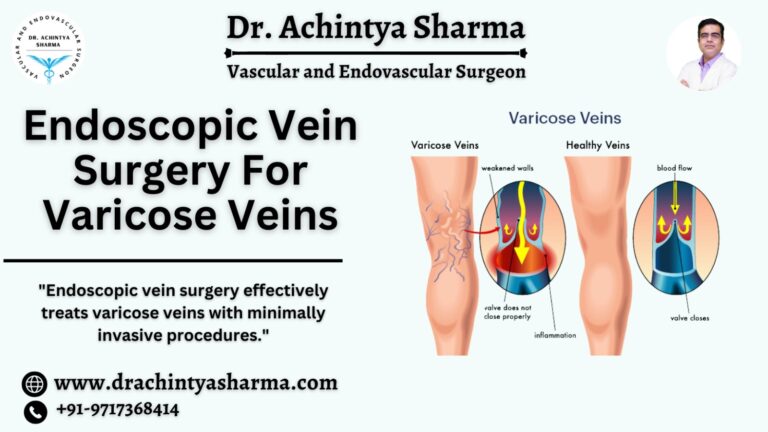
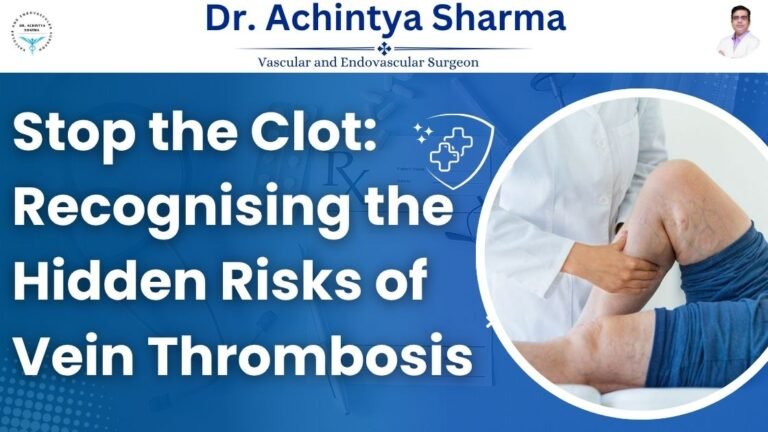
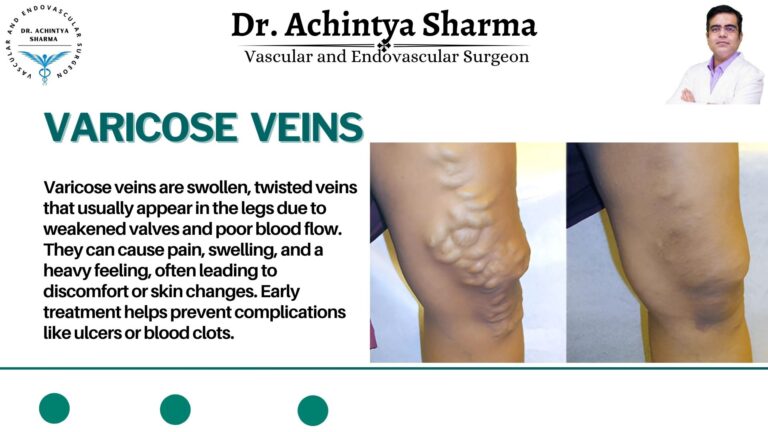
Hello, I enjoy reading all of your article. I like to write a little comment to support you.